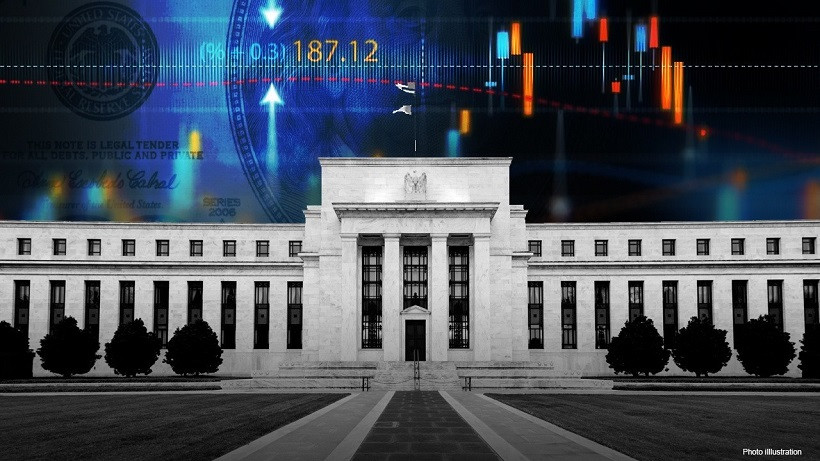The minutes of the last Fed meeting published yesterday left more questions than answers. The market actually ignored this release, due to its "vague" and predictable rhetoric. Although, in my opinion, traders underestimated the published document, which de facto has a pronounced hawkish tone.
Let me remind you that following the results of the November meeting, the members of the US central bank made the long-awaited decision to start curtailing the asset purchase program. The rate of reduction did not impress dollar bulls (15 billion per month), while the very fact of curtailing QE has long been won back by the market and taken into account in prices. Therefore, the reaction to the announced results of the November meeting was crumpled. As you know, "appetite comes with eating": market participants planned to hear hawkish notes from Federal Reserve Chairman Jerome Powell, in the context of the prospects for tightening monetary policy. Rumors that the Fed will decide on the first rate hike next year have been circulating among traders for several months – since American inflation exceeded the Fed's target level. However, at the final press conference, Powell disappointed dollar bulls with his restrained position. On the one hand, he did not rule out the hypothetical probability of a rate increase in 2022. On the other hand, the head of the Fed said that such a scenario is extraordinary and unlikely. He again repeated the mantra that the current increase in inflation in the United States is due to temporary factors, the impact of which will significantly decrease next year. Therefore, it is impractical to talk about plans to raise the rate now.

Such rhetoric in early November took dollar bulls by surprise, who clearly expected to hear hawkish theses, against the background of record inflation figures and good Non-farms. The market hesitated for a while, but eventually made independent conclusions about the prospects of the Fed's monetary policy. And these conclusions turned out to be in favor of the American currency. Traders for the most part assumed that the central bank would be forced to stop the jump in inflation by raising the rate, especially since inflation in the US does not seem to slow down. A little later, traders' assumptions were confirmed by some members of the Fed – some of them (in particular, Bullard) called on their colleagues to raise the interest rate in the spring-summer of 2022, others (in particular, Waller, Daly, Mester) stated the need to accelerate the winding down of the stimulus program. The "hawk wing" of the Fed has become louder and louder. It is noteworthy that some of yesterday's doves began to voice a tougher position (first of all, we are talking about Mary Daly).
In the context of recent events, the minutes of the November Fed meeting were supposed to "confirm" the vector formed to tighten the position of the central bank. Unfortunately for dollar bulls, the wording of the document is too veiled. It is impossible to speak unequivocally about any clear signals. Nevertheless, in my opinion, the text of the November minutes is extremely hawkish, especially when compared with the minutes of previous meetings.
And it's not just about the Fed's willingness to "maintain flexibility" in the context of a possible adjustment of monetary policy. The document states that "some members of the Committee spoke in favor of accelerating the pace of reduction of the incentive program." At the same time, "various" members of the Fed announced the need to raise the rate "earlier than expected earlier." It is also worth paying attention to another phrase of the minutes: "The Committee will take the necessary measures without any hesitation to combat inflationary pressure, which creates risks for employment goals and price stability."
The Fed does not disclose the cards to the end – the minutes do not indicate exactly how many members of the Committee spoke in favor of accelerating the curtailment of QE or for an earlier increase in the interest rate. Therefore, it is difficult to talk about the true balance of forces now – certain conclusions on this matter can be made only following the results of the December meeting. But, even taking into account this "understatement", it can be concluded that the Fed's position is gradually tightening.
It should be recalled here that the November meeting of the Fed was held before the release of data on the growth of inflation in the United States in October. As you know, the October consumer price index broke long-term records, confirming the strength of the inflationary impulse. The base index of the RCE, one of the Fed's "favorite" inflation indicators, also updated its multi-year highs yesterday, rising to 4.1% in annual terms - this is the highest value since 1990.
Thus, in my opinion, the market undeservedly ignored yesterday's release. Of course, the Fed's minutes are a kind of look from the past. But if we compare the rhetoric of the central bank's representatives at the November meeting and subsequent macroeconomic reports (especially in the field of inflation), we can conclude that at the December meeting, the position of the Fed members will be more hawkish.
Therefore, the minutes of the November meeting is another argument in favor of a strong dollar, even despite the "unappreciated" release. The published document became a vivid evidence of the divergence of the ECB and the Fed rates. And this is especially important ahead of the December meeting of the European Central Bank, which will be held next Thursday.

Summarizing all of the above, we can come to the conclusion that short positions in the EUR/USD pair are still a priority. Any corrective pullbacks can be used to enter short positions. The first target for the downward movement is 1.1150 (the lower line of the Bollinger Bands indicator on the daily chart). The main target in the medium term is the psychologically important target of 1.1100.
The material has been provided by InstaForex Company - www.instaforex.com